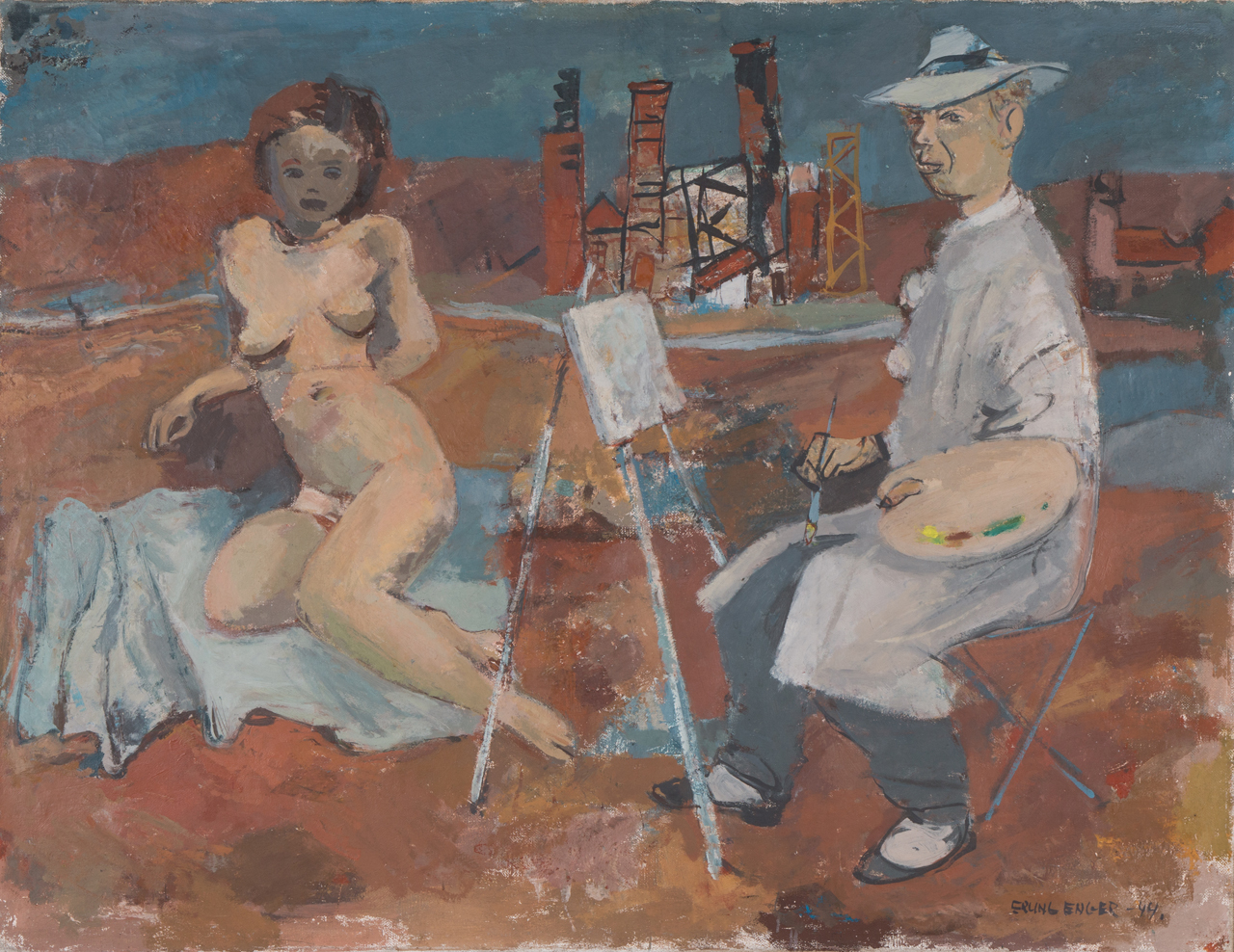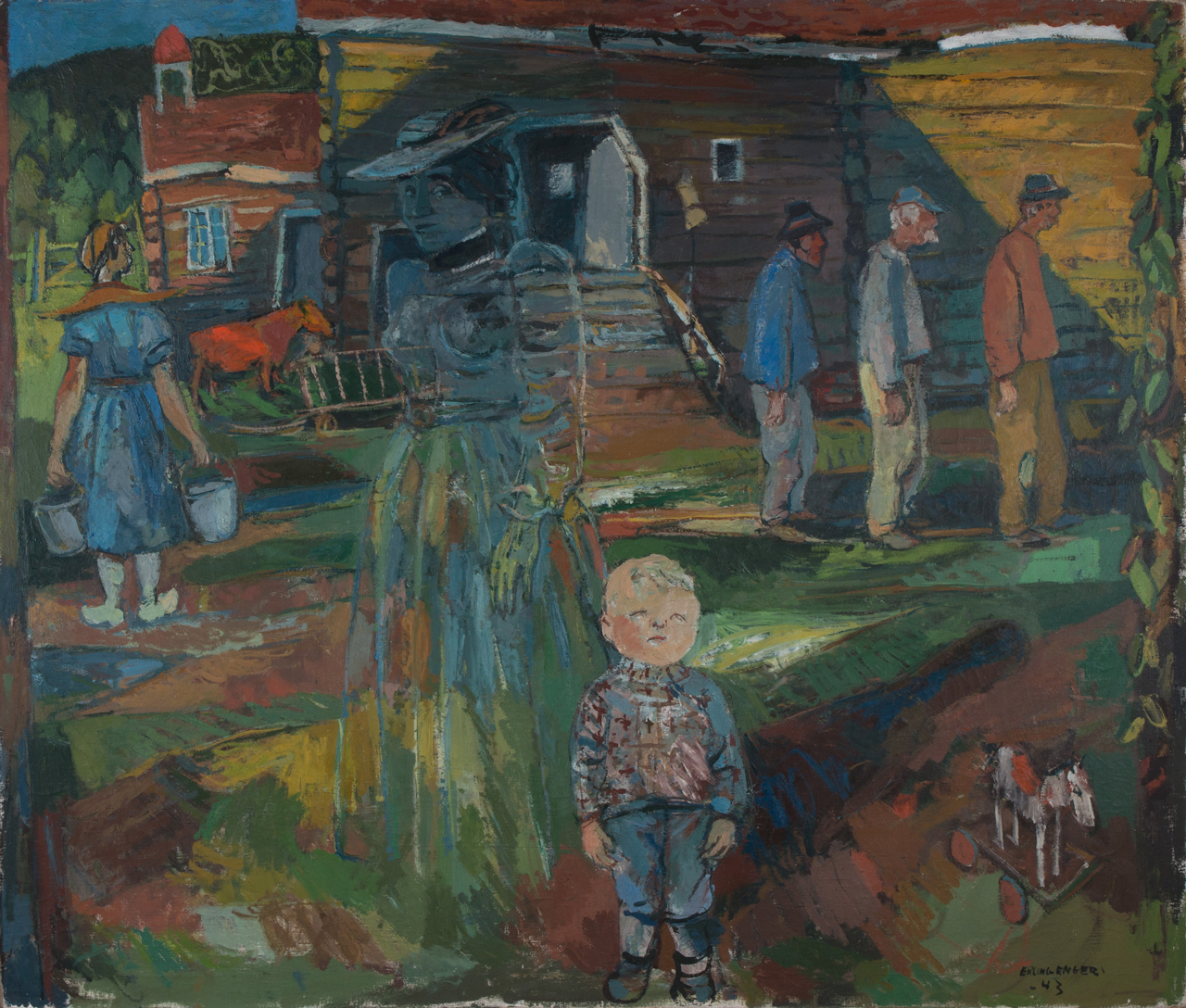Erling Enger (1899 - 1990)
Erling Enger’s pictorial subjects often stem from the forestry and farming milieu in Enebakk, a municipality just east of Oslo. Early in his career he was inspired by German Expressionism and experimented with painting techniques. In the 1930s he worked for a while with so-called ‘powder painting’, which involved sprinkling dry pigment on an adhesive ground. The paintings in the Hafsten Collection are more naturalistic in style and demonstrate Enger’s ability to depict people and situations with great empathy and involvement.
"Erling Enger - the dear humorist in Norwegian art - I got in touch with during the war. The first picture I bought of him was "The Romantic". It happened at his home in Schönningsgate, it was a pity I did not secure more pictures of him at that time, because later it has always been difficult to get things directly from him, as he has so many around him who want to buy. He himself is always modest and not as elusive when it comes to getting rid of the things he has done. After this purchase, in 1943 he arranged a exceedingly enjoyable party at his home. I remember it with gratitude, because I met many nice artists there. After all, parties was especially appreciated at that time. ” (Halvdan Hafsten)

Romantikeren, 1944. Innkjøpt fra kunstneren.
‘Bildet er et selvportrett. Jeg har ment det harcellerende og har utstyrt meg litt klovneaktig. Jeg sitter og maler mens krigen går sin gang. Ruinen i bakgrunnen skal uttrykke krigen.’
(Skrevet av kunstner på oppfordring av Hafsten)

Old Farm, 1943. Purchased through the artist and the art critic Pola Gauguin, Oslo, 1943
‘The picture was painted after a summer spent at Børter in Enebakk. Børter is the neighbouring farm to Ekeberg, where [the author] Ragnhild Jølsen grew up. I’ve painted the farmer’s son and heir in the foreground. In the background, farm hands are seen in the shade of the main building. The ghost is included as a representative of ancestors. I chose Ragnhild Jølsen because she belonged there.’ (Written by the artist at Hafsten’s request)
Article and archive selection
Hanne Beate Ueland, Director Stavanger art museum
Photos
Stavanger art museum